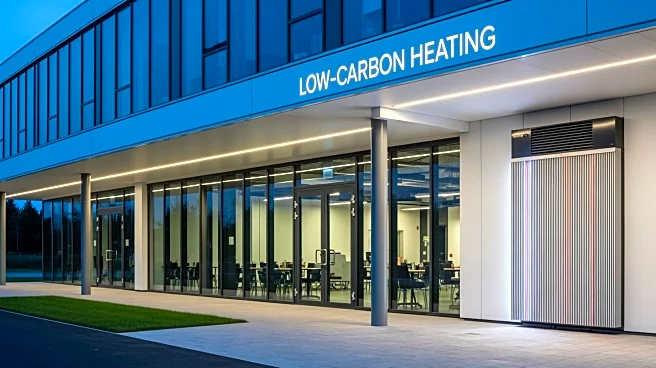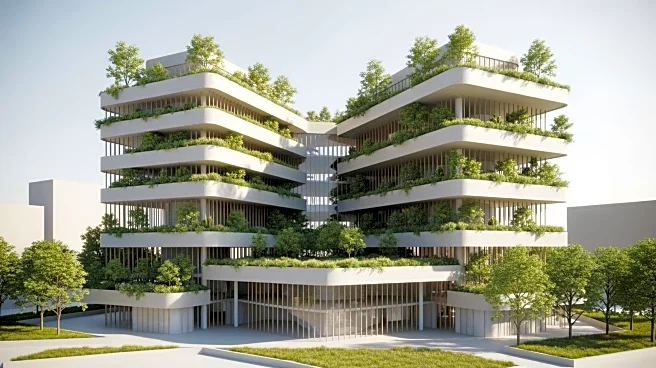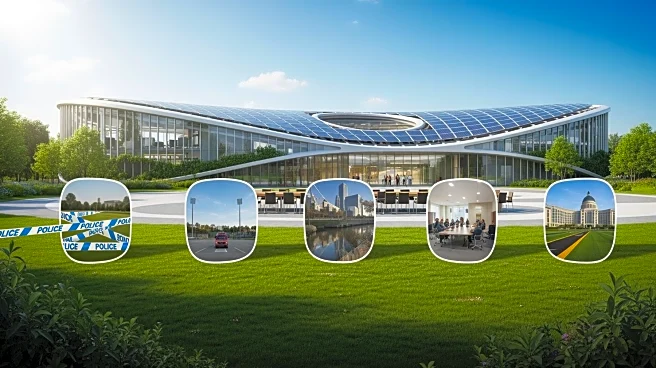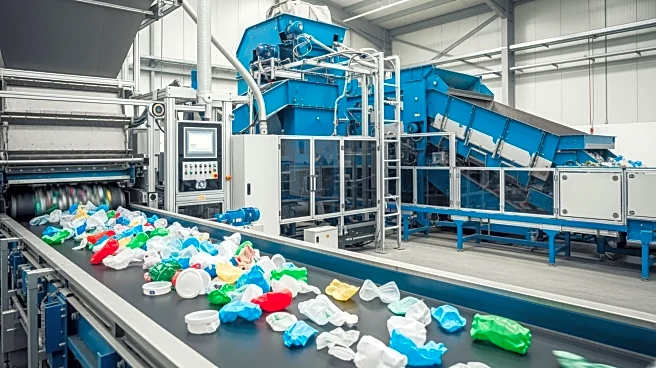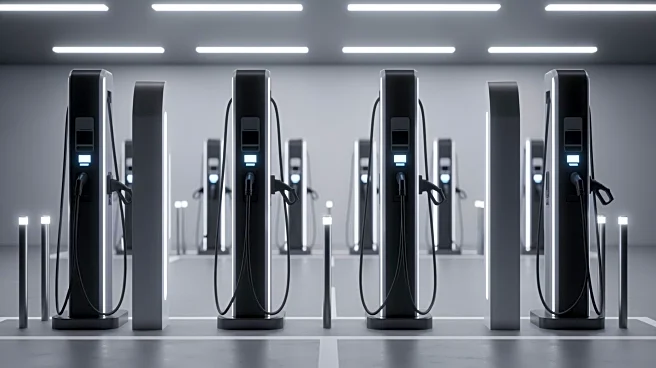What's Happening?
The focus on transitioning the UK's domestic properties from gas to lower-carbon heating systems has inadvertently led to a stagnation in the non-domestic sector's decarbonization efforts. Despite the establishment
of minimum energy efficiency standards in 2018, progress has been slow, with gas usage figures flattening. The non-domestic sector, which includes retail, warehousing, and office markets, is increasingly prioritizing sustainability, with certifications such as BREEAM and NABERS becoming highly sought after. A notable example is Building No.8 at Exchange Quay in Manchester, where the landlord replaced gas heating with 12 Mitsubishi Electric CAHV air source heat pumps, significantly improving the building's EPC rating from D to B.
Why It's Important?
The transition to low-carbon heating systems in commercial buildings is crucial for reducing overall gas consumption and achieving decarbonization goals. Non-domestic buildings consume a significant amount of gas, equivalent to that used in millions of homes, making them a key target for energy efficiency improvements. The adoption of modern heat pump technology in sectors such as offices, education, and health can lead to substantial energy savings and cost-effectiveness. As domestic heat pump installations increase, the focus will shift to non-domestic buildings, which could face higher gas prices and devaluation if they fail to adapt.
What's Next?
Building owners in the non-domestic sector are encouraged to future-proof their properties by transitioning to energy-efficient heat pump systems. While there are currently no grants for commercial non-domestic heat pumps, incentives exist for building owners to act now. The Public Sector Decarbonisation Scheme (PSDS) offers support for buildings in the health, community, and education sectors to finance the move away from fossil fuels. As energy pricing changes, those who have not transitioned may face increased costs and devalued properties.
Beyond the Headlines
The shift towards low-carbon heating systems in commercial buildings not only addresses immediate energy efficiency concerns but also aligns with broader sustainability goals. The adoption of certifications like BREEAM and NABERS reflects a growing demand for environmentally responsible practices. This transition also highlights the importance of proactive measures in the face of evolving energy markets, ensuring long-term viability and competitiveness for building owners.
